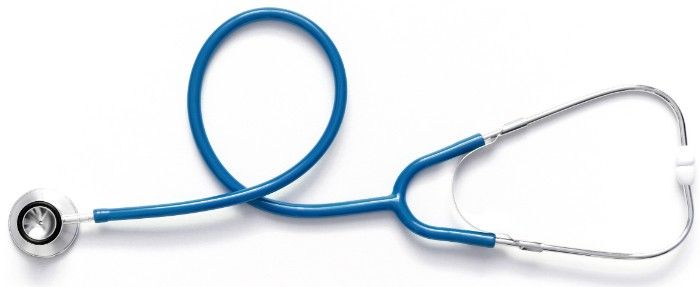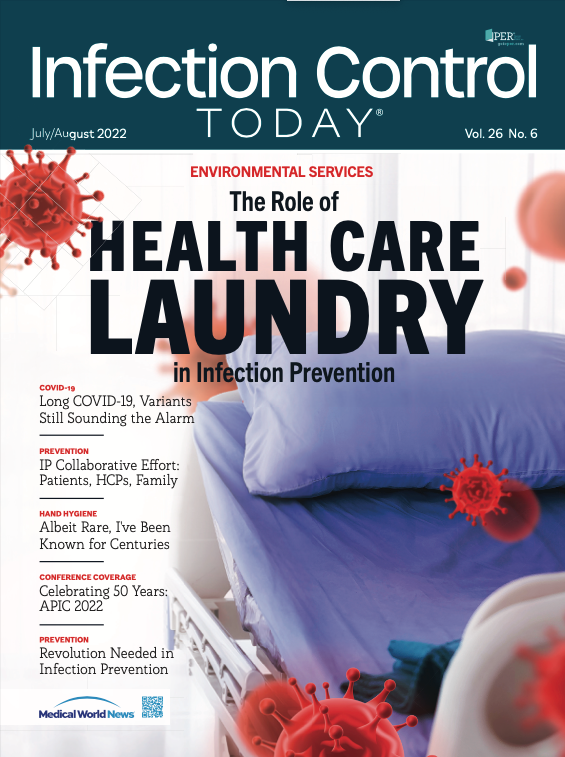Did Stethoscope Hygiene Improve Before and After COVID-19?
Despite the emphasis on more improved infection prevention practices, stethoscope hygiene continually falls short, possibly leading to more health care-acquired infections.
Stethoscope Hygiene (Adobe Stock)

Because health care-associated infections (HAIs) are associated with significant mortality and cost, extensive emphasis has been placed on hand hygiene; however, stethoscope hygiene has had little emphasis. Previous studies have demonstrated stethoscopes can be contaminated by infectious pathogens, including methicillin-resistant Staphylococcus aureus (MRSA), vancomycin-resistant Enterococcus (VRE), and Klebsiella spp.
Furthermore, stethoscopes have demonstrated that the same level of contamination as a HCP’s hand, and those pathogens on the stethoscope can be transferred to patients when examining them.
A recent study, “Assessing changes in stethoscope hygiene during COVID-19: A multicentre cross-sectional study” published in The Journal of Hospital Infection, investigated this topic to improve stethoscope hygiene and to see how it changed—or did not change—during the COVID-19 pandemic.
Investigators from 3 major medical centers, University of California (UC) medical centers: UC San Diego, UC Davis, and UC Irvine, developed a 33-question survey asking health care providers (HCPs) about frequency of stethoscope use, perceptions of safety, and pathogen transmission associated with stethoscopes.The survey questions had 2 parts: “Before COVID-19" and “During COVID-19." Investigators also obtained demographics data, including age, sex, provider type, and years in practice. Survey questions contained a combination of 5-point Likert scale (Strongly Disagree to Strongly Agree), binary (Yes/No), categorical frequency, and free-response questions.
“In this study, we aimed to assess how HCPs’ knowledge, attitudes, and practices surrounding stethoscope hygiene have changed during the COVID-19 pandemic,” the investigators wrote in the study. “Additionally, we aimed to identify provider groups that might be deficient in stethoscope hygiene to identify potential targets for future intervention.”
The investigators discovered that, despite a positive shift in stethoscope hygiene during COVID-19, best hygiene practices were still only performed by around half of HCPs. Therefore, the investigators encouraged instruction, especially for providers early in their careers.
Of the invited 5022 participants, 515 (10.3%) completed the survey, and 55 participants (1.1%) were excluded for reporting no stethoscope usage both before and during COVID-19, leaving 460 (9.2%) included in the investigators’ analysis cohort. Interestingly, the physician respondents (75.9%), 65% were in general internal medicine, family medicine, or pediatrics, with 11% in medicine/pediatric subspecialties. 8% were in emergency medicine, 5% in surgical specialties, 4% in critical care, 3% in obstetrics-gynecology, and 5% other specialties.
Optimal hygiene increased from 27.4% to 55.0% (P < .001). There were significant increases in Likert scores for all questions pertaining to knowledge of stethoscope contamination (P < .001). Interestingly, the respondents’ belief in stethoscope contamination increased (P < .001) despite no change in received hygiene education. Overall, resident physicians were less likely compared to attending physicians and nurses to have adopted optimal hygiene during COVID-19 (P < .001).
“Prior studies on hand hygiene interventions have found that social pressures and increased perception of hygiene risk promote lasting improvements in hygiene behavior This phenomenon might explain the improvement in stethoscope hygiene observed in this study as well as increases in hand hygiene during COVID-19,” the investigators wrote in the study. “Amidst the greater infection control vigilance and social pressure catalyzed by the pandemic, interventions to improve stethoscope hygiene might be more effective.”
However, the investigators clearly did not hold out hope for HCPs to improve their practices. “Prior interventions for stethoscope hygiene that have been met with mixed success, including notable studies from Holleck et al, demonstrating no change in hygiene rates after implementing robust educational interventions.”

Endoscopes and Lumened Instruments: New Studies Highlight Persistent Contamination Risks
May 7th 2025Two new studies reveal troubling contamination in both new endoscopes and cleaned lumened surgical instruments, challenging the reliability of current reprocessing practices and manufacturer guidelines.
Happy Hand Hygiene Day! Rethinking Glove Use for Safer, Cleaner, and More Ethical Health Care
May 5th 2025Despite their protective role, gloves are often misused in health care settings—undermining hand hygiene, risking patient safety, and worsening environmental impact. Alexandra Peters, PhD, points out that this misuse deserves urgent attention, especially today, World Hand Hygiene Day.